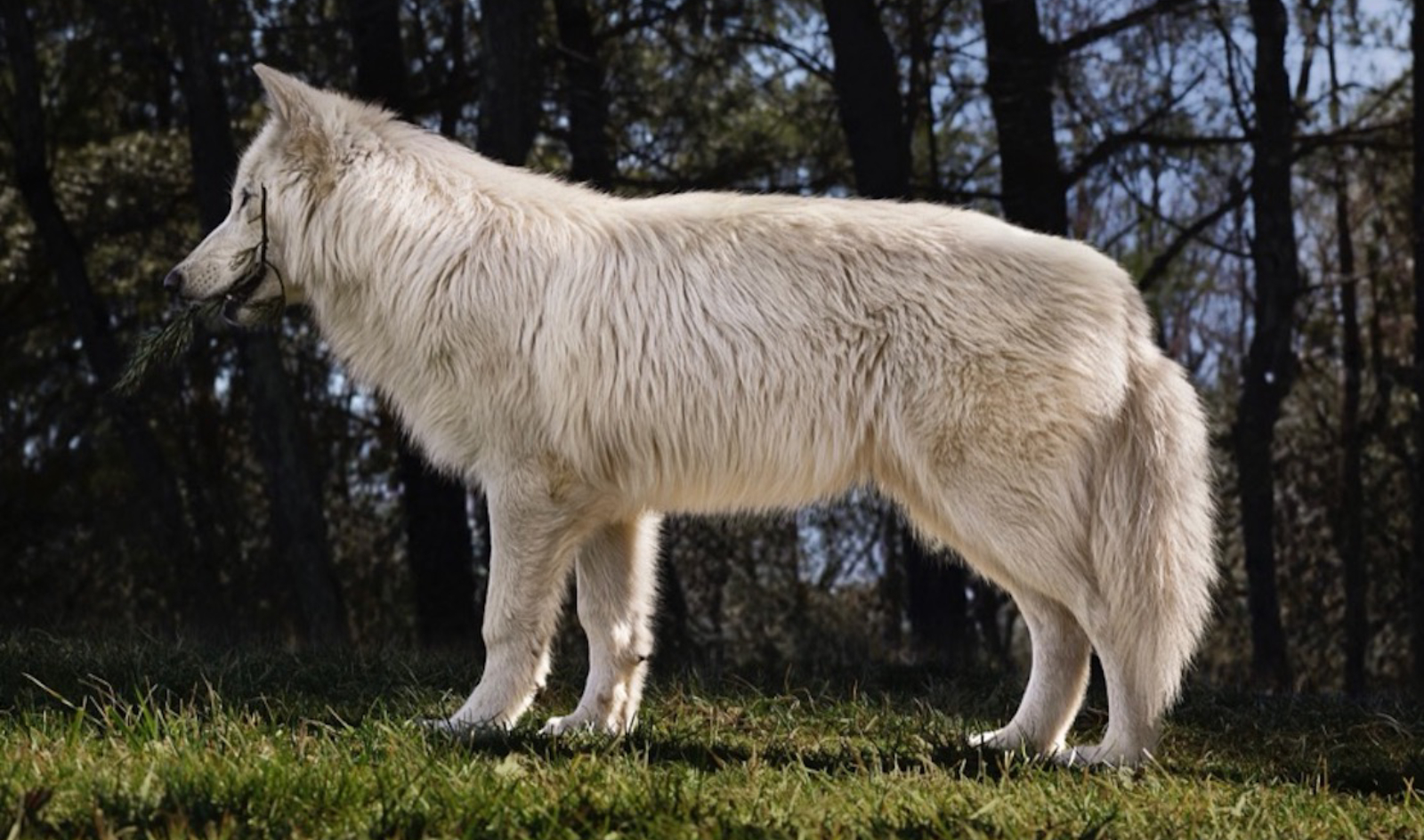First Genetically Engineered Dire Wolf-Like Animals Born
De-extinction company Colossal Biosciences has produced three genetically engineered animals with dire wolf-like traits using a gene-editing approach applied to gray wolf cells. As reported in TIME on April 7, 2025, the company successfully engineered three living animals to approximate the extinct dire wolf (Canis dirus), which vanished over 10,000 years ago.
The pups—Romulus, Remus, and Khaleesi—were born between October 2024 and January 2025 after gestating in surrogate hound mixes. Their births followed the introduction of targeted genome edits into gray wolf cells, making them the first living animals created to match an extinct species through multipoint genomic substitution.
Colossal began by sequencing ancient DNA from two dire wolf remains: a 13,000-year-old tooth from Ohio and a 72,000-year-old petrous bone from Idaho. Using these as references, the company identified 20 genetic changes across 14 genes that distinguish dire wolves from gray wolves. These included modifications linked to body size, cranial structure, jaw strength, and behavior—traits supported by fossil records and comparative canid genomics.

Colossal's now-grown dire wolf; Source: Colossal Biosciences
The edits were made in endothelial progenitor cells—blood-derived cells used here as an alternative to more invasive tissue sampling. These nuclei were transferred into donor ova to produce 45 embryos, three of which developed to term. The resulting pups exhibit larger frames (expected to reach 150 lb and 6 ft in length), white coats, and behavioral traits aligned with wild canids, such as early howling, stalking behavior, and human avoidance.
The animals are housed in a 2,000-acre U.S. preserve under observation. They are not intended for rewilding but instead serve as a test case for de-extinction technologies. Colossal used similar techniques to clone four red wolves (Canis rufus), aiming to restore genetic diversity in a population with fewer than 20 known individuals in the wild. These red wolves were created using DNA from Gulf Coast canids found to carry “ghost alleles” of red wolf ancestry—an attempt to bypass the effects of a genetic bottleneck.
Colossal’s method diverges from classical cloning by combining genome editing with less invasive cell sourcing and focusing on precision rather than whole-genome duplication. While early results are promising, researchers note that cloning and gene editing still involve low success rates, risks to surrogates, and unknown long-term effects from polygenic edits.
Founded in 2021, Colossal currently employs 130 scientists and has reached a private valuation of $10.2 billion. In parallel with its dire wolf and red wolf work, the company is progressing toward development of a mammoth-like elephant using 85 planned gene edits. Twenty-five of these edits have been completed, and embryo implantation is targeted for 2026.
In March, the company announced the creation of a “woolly mouse”—a chimeric rodent carrying mammoth DNA conferring traits like a long coat and cold-adaptive fat metabolism. Colossal has also spun out related ventures including Form Bio, focused on AI-guided drug discovery, and Breaking, a startup using engineered microbes for plastic degradation.
Cover image: Colossal Biosciences
Topics: Biotech